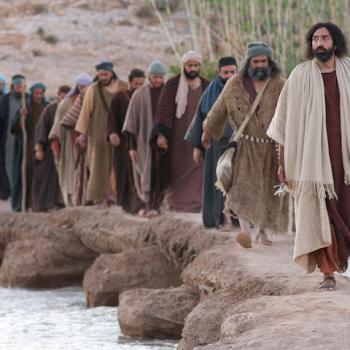The Leadership Roles

Some time ago I wrote on parent leadership as new paradigm in leadership styles. I explored the differences between various leadership models, such as traditional, bureaucratic, charismatic, etc., and goals of each. Recently, I have come to understand the two types of roles that make up parent leadership.
Each of these roles is defined by its own responsibilities and its own spheres of action or influence. Neither can do without the other. Each must accept as well as understand the need of the other to function well together.
These roles are akin to those in a family and a home. These are the parts played by a father and a mother, which are the normal parental roles that signify a family.
A family is a team at home with common goals, aspirations, timelines and focus. There is an appropriate work culture and a rhythm of functioning that enables the family unit to progress and prosper.
Both these roles are crucial and important for the nature and nurture of this basic unit of society. When families prosper, then communities prosper, society proliferates and the city/nation achieves incredible success.
Parent Partnership

Today, there is a trend and tenure in the workplace to consider your team as your family. Nancy Solari gives three reasons why it is a win-win to treat your team as family. Therefore, it is very relevant to know and understand how these roles play out in the workplace. It is crucial to understand their importance.
The nuances of these roles are well laid out and articulated in and by the Bible. Their part in raising a family is best given in the words and sayings of King Solomon the Wise. The smartest, most brilliant and most knowledgeable man on earth wrote these words:
My son, comply with the commandment of your father, And do not ignore the teaching of your mother; Bind them continually on your heart; Tie them around your neck. When you walk, they will guide you; When you sleep, they will watch over you; And when you awake, they will talk to you. For the commandment is a lamp and the teaching is light; And rebukes for discipline are the way of life (Proverbs 6:20-23).
The two words, commandment associated with a father, and teaching associated with a mother, exemplify and qualify the full parenting roles.
Command and Teaching

A commandment is a command, a mandate, an order or injunction given by authority. It’s a charge or an authoritative precept, a behest that is laid down by one in command or a commander.
Commandment is first associated with the Ten Commandments given by God to Moses on Mt Sinai. He set them as the basic preamble for the set of laws which followed. These laws constituted Israel as a nation and branded them as His own special people.
Teaching is defined as one of the instruments of education. It is a special function to impart understanding and skill. The main function of teaching is to make learning effective. The learning process gets completed as a result of the teaching. Thus, teaching and learning are very closely related.
H. C. Morrison says Teaching is an intimate contact between the more mature personality and a less mature one. Teaching is also considered to be a social and cultural process. It is planned and done to enable an individual to learn something in their life.
Again, teaching is defined as an engagement with learners to enable their understanding. It helps them with the practical application of knowledge, concepts and processes. It includes design, content selection, delivery, assessment and reflection.
Parenting Roles

A father is meant to be the head of the family and the authority figure who guides the family. He is the one who sets in place certain mandates that will enable his household to be fruitful, achieve certain family goals. Then the family will have an impact and influence on the community around.
A family is the subset or building block of society. For it to be a functional unity of the whole, it must be constituted to be in order, primarily by the father or the head of the home.
In the home, while the father lays down the law, it is the mother who takes it and causes it to be implemented or adhered to. She comes alongside, individually, providing interpretation and practical application of the mandate of the father. She makes it feasible and comprehensible to young minds. Since she is in sync and a deeper relationship with the father, she is able to provide context for his expectation. She breaks it down to day-to-day tasks, bearing in mind the overall intention of the father.
She is his validator who makes his ideas into reality, communicating his mind effectively to the rest of the family. The mother is the co-head who ensures the well-being and goal of the family. She is closer and more sensitive to each and every member of the family. Thus, she can adapt and impart the common goal of the family according to the individual nuances of the different people who form the family.
The role of the mother is crucial and mandatory for translating instruction into practical application. She is also the mediator who bridges the gap between the head and others. She enables relationship and communication, promotes harmony and unity. This ensures that the family moves forward to achieve its goals. She smoothens troubled waters with her wise words and skillful conduct.
This is why the Bible gives the injunction to the children not to despise her role, since it is usual for the family to honor the father and neglect the mother.
Team Dynamics

Now, how does this play out in a team at work or in an office scenario or in a corporate company or even in a church leadership team?
A team must have, not just a leader, but also a co-leader who is a validator of the leader. This person has a mother-like role, who works with and in unison with the leader to help achieve the desired outcome.
The leader sets the target but it is the co-leader who nurtures the team to rise up to the occasion. The co-leader or the second-in-line is also a validator and authenticator of the leader. They help the leader and the team relate well, often acting as the mediator between the two, cultivating a healthy work environment.
While the leader would be a visionary whose eyes are set on the goal, the co-leader is practical and down-to-earth, though they too are visionaries. The leader will tend to miss the nitty gritty things of reaching the goal since his or her eyes are set on the horizon. The co-leader’s eyes are also set on the end, but in addition, they are well aware.of the bumps and speedbreakers along the way.
Thus, they work to help the team when they hit roadblocks and barriers to the desired outcome.
Co-leader Concerns

Just as a mother, person and role, is core and essential to the well-being of a family, a co-leader is of utmost importance to a team at work. They are crucial and critical to reach the set deadlines and targets, and therefore, must be recognized as such. They must be empowered by the leader with authority to deal with truant and slackers, honored before all and backed up as his or her righthand.
The leader must:
- Spend time with his or her validator to share their thoughts as well as to appreciate their role in the team.
- Prioritise this person, giving space to them to voice their concerns and give ear to them.
- Cultivate a deep relationship with his or her co-leader, treat them with utmost respect, never belittle them, and trust their insight.
- Not be so insecure as to compete with the co-leader, but give time to foster them, while they teach and instruct the team.
The leader can have more than one co-leader, but must not pit one against another. Rather, he or she must work to preserve unity among the co-leaders, favoring all equally so as to ensure their security with him or her. The leader should be open and accountable to his co-leader (s) as well as give ear to their difficulties in dealing with the team. He or she must understand their concerns and provide solutions to issues they bring to him or her.
If you are a leader and don’t have validators and co-leaders, or work to develop such, you would either become a burnout or be stuck with one project only.
Teach and train a few, pouring your acumen into them, and then appoint them to be your co-leaders.
In a chessboard or game, the Queen validates and protects the King as his second most important player. Even so, a co-leader is mandatory for your team!
To know how to choose validators and co-leaders, read my article entitled The Power of Having and Being A Validator
If you do raise and appoint co-leaders and validators, you will expand and grow in every way, exponentially!
Does your team or teams have leader and co-leader (s) who ensure success of your expectation? Do you have a strategy and a plan to raise them?
If not, begin today to do so!













